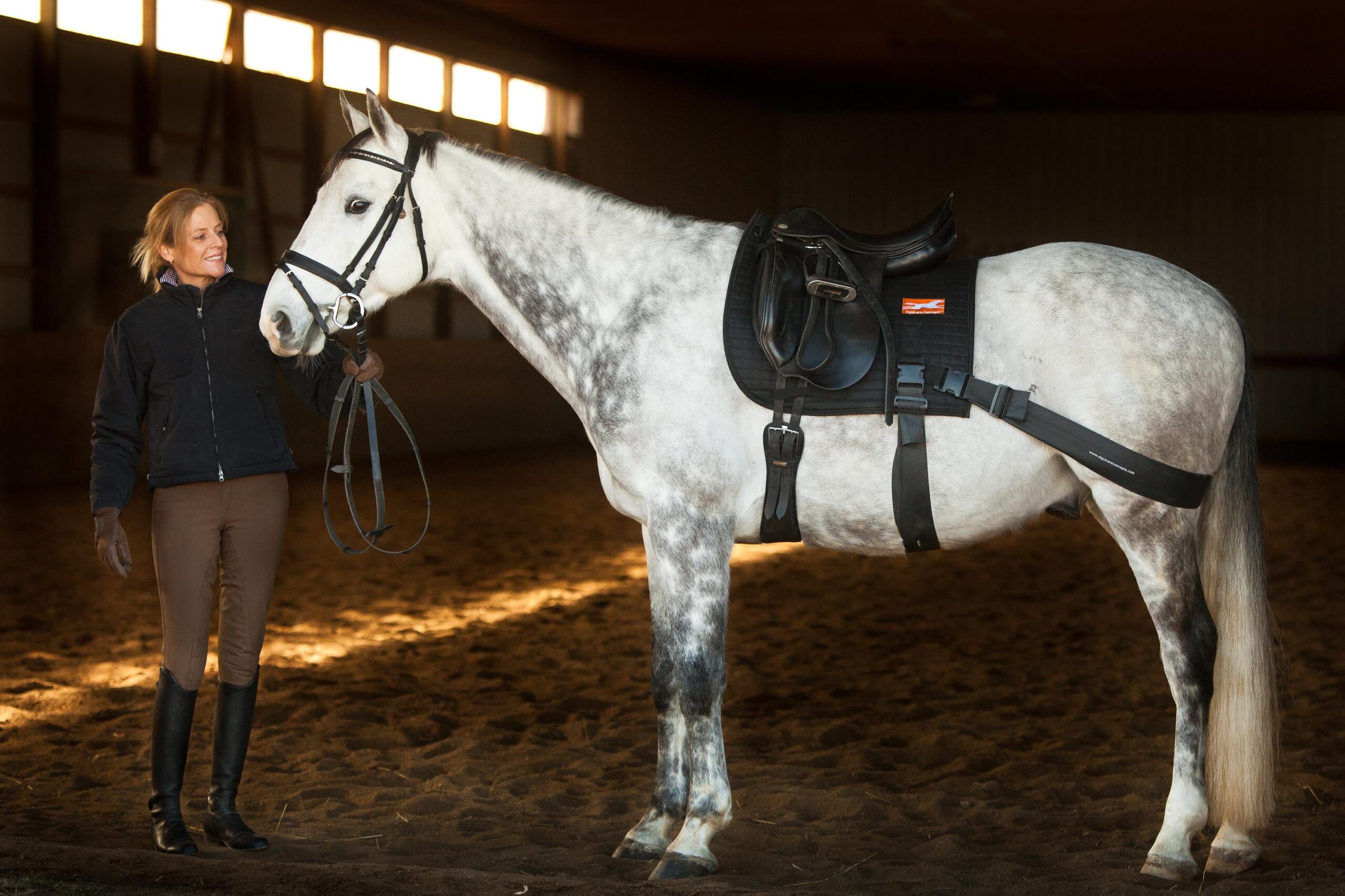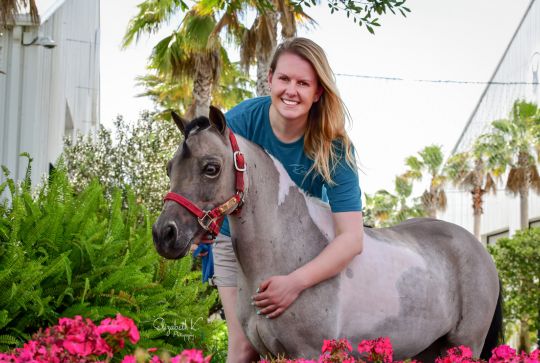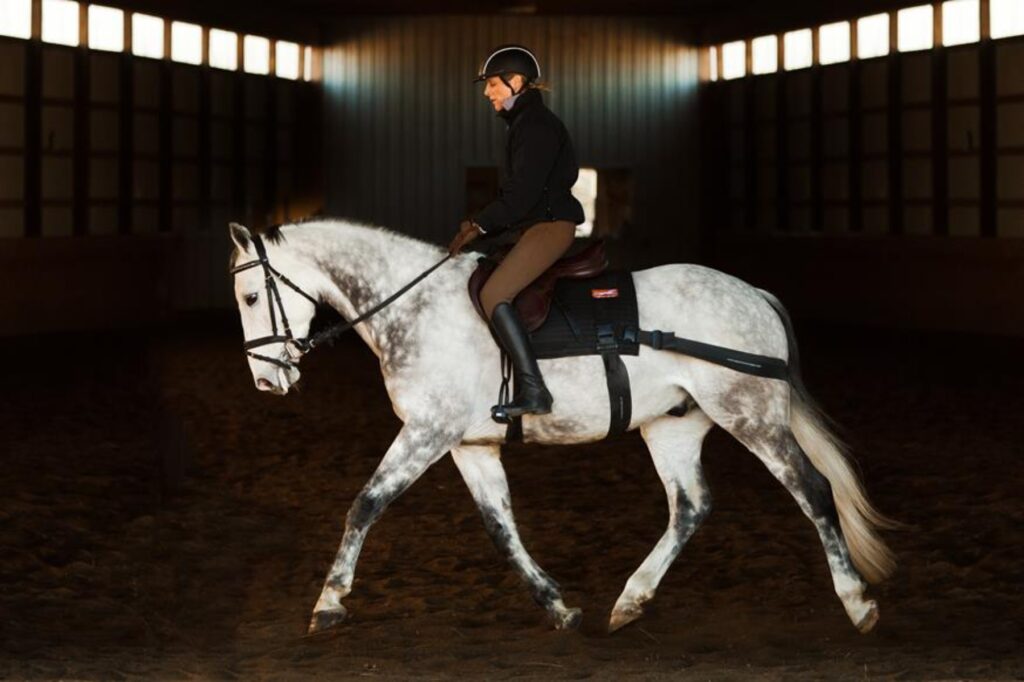Menu

Resistance bands are well known tools in the gym and home workouts for humans, but did you know that they can be very beneficial for your horse as well? One of the most difficult and important aspects of horse training and rehabilitation is engaging the horse's core and hind. As the only scientifically proven resistance band system for horses, the Equiband® Pro System may provide the much-needed engagement in your horses’ body.
Jennifer Zonghetti, owner of Revitalizing Equine Services, LLC, is an equine massage therapist and rehabilitation practitioner based in the United States. She is dedicated to making educational resources accessible to backyard horse owners, ensuring that they have the tools and knowledge to support their horses' health and happiness. Through her work, she aims to empower horse owners with practical, easily digestible information that can be readily applied to benefit their equine companions. Horses have been a part of her life for more than 20 years.

In this article, Jennifer Zonghetti is referring to the Equiband® Pro System by Equicore Concepts LLC as the system of resistance bands she is using. You can use any kind of resistance band suitable for horses, and you just have to find the system and brand of resistance bands that both you and your horse are comfortable with.
The resistance band should provide proprioceptive feedback (training a part of the horse's sensory system) during motion which would help your horse to activate its core abdominal and hindquarter to improve strength and balance in the whole body of your horse.
Resistance bands are long pieces of elastic bands used for resistance training. For humans, they come in a variety of colors, shapes, sizes, and resistance levels, making them a versatile tool for a wide range of exercises. For horses, we use for instance the Equiband® Pro System.
The science behind resistance bands lies in the concept of resistance training. The resistance bands provide a form of resistance that is created by the tension in the band when it is stretched. This resistance challenges the muscles, activating them and creating microtears in the muscle fibers, which are then repaired during the recovery phase. As the muscle fibers repair and rebuild themselves, they become stronger and more resilient. It may sound like a scary process, but this is how muscles are built!
The Equiband® Pro System consists of a saddle pad that comes in multiple sizes (mini, pony, small, regular, and large) along with an English or Western option. It can be used with a surcingle or saddle, while ridden or when doing groundwork exercises. The pad has four buckles; two buckles on each side. One set of buckles is for the belly band that attaches behind the rider’s leg and passes under the abdomen. The second band is the hind-end band that passes behind the horse’s hind end and under the tail. Both bands are latex-free and have been specifically designed to be used on horses.
The Equiband® Pro System stimulates the mechanoreceptors: receptors in the horse’s skin and hair follicles. These receptors trigger the abdominal, deep neck, and back muscles to activate, stabilizing the spine and engaging the hindquarters.
“The key aim of the Equiband®Pro System is to improve core muscle activation through continuous stimulus from parts of the body to the brain, resulting in changes in motor output,” Dr. Nicole Rombach, co-Founder of Equicore Concepts LLC.
We’ve all heard of the saying, “Use it or lose it,” and this applies to horses, too. Resistance bands fall into the category of strength training, which has been shown to be effective in building muscle strength and endurance, improving balance and stability, and enhancing overall fitness. Horses with stronger muscles and core strength can better support their body weight and have a more efficient athletic performance.

A strong core is a vital component of the horse’s body. The core includes the abdominal muscles and oblique muscles, along with the supporting deep spinal muscles. One of the key components the core contributes to is postural stability. Horses with an optimal body posture effectively utilize their joints and muscles, showcasing efficient and coordinated movement. They are able to move correctly, maintaining a sense of balance and self-carriage. This reduces unwanted strain and stress put on tendons, ligaments, and joints, along with ensuring that muscles are utilized correctly. It also plays a pivotal role in mitigating the risk of injuries. Poor posture can contribute to poor biomechanics, atrophied muscles and compensatory movement patterns. The decrease in all of these components in the horse can lead to early exhaustion, uncomfortable movement, and injuries, which can all have a negative impact on the horse’s body. Horses with a weak core can exhibit but are not limited to hollowing of the back, resistance or difficulty with transitions, lack of engagement in the hind end, asymmetry, or lack of balance and coordination.
Research shows that the Equiband® Pro System is beneficial even with hand walking. After 4 weeks in a resistance band, researchers from the University of Georgia found improved hindlimb symmetry, spinal stability, and less compensatory patterns in horses with mild hindlimb lameness.
Dynamic stability is also a factor to take into account when considering the core and postural strength of a horse. This is the horse's ability to maintain balance and coordination while in motion. It allows the horse to make rapid adjustments in its body position and movements, to stay upright and move efficiently.
This dynamic stability results in a smoother and secure platform for the rider, reducing the risk of imbalance from outside forces, and minimizing the impact on the rider's spine and joints. The effective weight distribution across four legs also lowers the risk of injuries for the horse.
Strength training and conditioning go hand-in-hand. The process involves the gradual building of muscle development to prepare the horse for ridden work. Working in-hand with resistance bands can be used to strengthen the core muscles and can continue to be used as ridden work is introduced to ensure the horse maintains a strong posture. Early strengthening of muscles helps prevent injuries which can set your young horse back.
A strong and engaged core is the foundation for a horse's ability to execute the pirouette and piaffe, or to jump over oxers while still maintaining balance and coordination. By utilizing the resistance band, equine professionals can continue to activate and strengthen the deep muscles surrounding the horse's spine. This focus on core activation not only enhances the horse's athletic performance, but also contributes to the prevention of injuries, ensuring the longevity of a successful and healthy career in the competition world.
As horses age, maintaining a strong core becomes increasingly crucial as loss of muscle mass, quality, and strength become more common as the years progress. Incorporating resistance bands into a regular exercise program can diminish the likelihood of musculoskeletal issues and promote longevity. Investing in the strength and posture of an aged horse can enhance the overall quality of life, allowing the horse to safely navigate through challenges they may face ahead.
Prolonged inactivity due to an injury can cause muscle atrophy. Loss of muscle can cause physical impairment to the body, such as the inability to get up after lying down, decrease in performance ability, and increased risk of injury. The Equiband® Pro System and other resistance bands can aid in core strengthening and movement retraining for horses returning to work.
Resistance bands are a great addition to horses who are recovering from colic surgery, have been diagnosed with kissing spines, or have poor posture, engagement, and development of muscles. They can also be used with horses who are recovering from a musculoskeletal or neurological disorder, and to help with horses who have asymmetrical movement.
The Equiband® Pro System can be used during lunging, groundwork, or while ridden, with or without poles. It is best to start desensitizing your horse to the setup before incorporating it into your horse’s exercise.
When fitting the bands, it is important to keep in mind to have enough tension on the band: it should not be loose or sliding. The band should be snug against the horse’s body; stretched fully then reduced to about 2/3s of the distance between the buckles, for optimal tension. For your horse’s first time wearing the band, it is suggested to start with the abdominal band. The goal is to activate the horse’s trunk core and support the spine, before asking the horse to engage his hind end.
Just like with any muscle-strengthening activity, fatigue can occur. To avoid this, it is best to use the bands for short periods of time to start, and gradually increase as the horse gets stronger. The length of time where resistance bands are used will vary from horse to horse, depending on their physical level. It can take four to six weeks for the body to adapt to the bands, and upwards to three months for the muscles to gain full strength. Because of this, it is advised to use the bands in short, 5-minute sessions to start, multiple days a week, increasing the time as the horse gains strength, while decreasing the number of days it is used. Once the muscles are sufficiently strong, the days and time used can be tapered down to a maintenance schedule.
Week 1: 4-5 days a week for 5minutes
Week 2: 4-5 days a week for 10 minutes
Week 3: 3-4 days a week for 15 minutes
Week 4: 3-4 days a week for 20 minutes
Week 5: 3 days a week for 30 minutes
Overall, the Equiband® Pro System has been proven to strengthen the core, postural stability, and dynamic stability of the horse. It can be safely incorporated into the exercise program of any equine athlete, and aid in rehabilitation from musculoskeletal issues to neurological conditions. When in doubt, consult with a veterinarian if your horse has an undiagnosed lameness or ailment before introducing the Equiband® Pro System or any other resistance bands into their exercise schedule.